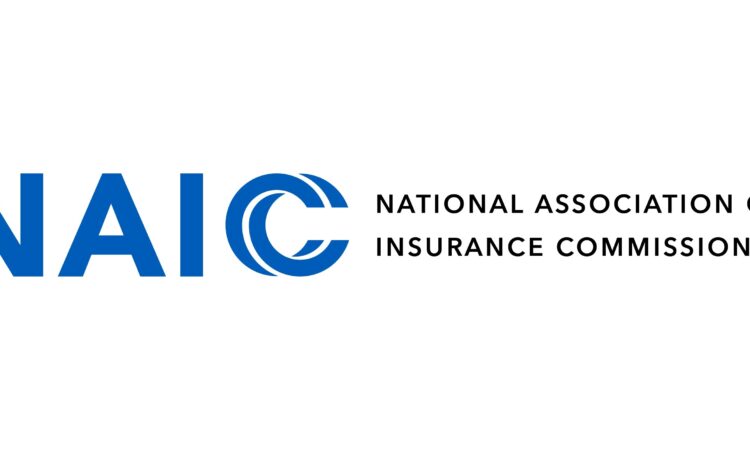States Issue Property & Casualty Market Intelligence Data Call Covering Over 80% of U.S. Market

WASHINGTON, March 8, 2024 /PRNewswire/ — State insurance regulators monitor homeowners property insurance markets as part of their mission to protect consumers, hold insurers accountable, and ensure fair, competitive, and healthy insurance markets. Under their regulatory authority, state Departments of Insurance routinely collect data from insurance companies to better understand market dynamics. Today, state insurance regulators have united to issue a comprehensive, multi-state data call coordinated by the National Association of Insurance Commissioners (NAIC) to collect and analyze data covering more than 80% of the U.S. property insurance market by premium volume.
The Property & Casualty Market Intelligence Data Call (PCMI) will gather data from more than 400 property insurers operating locally and across the country to give state insurance regulators a clear sense of what is happening in their individual property markets and the nation overall.
State insurance regulators collaboratively developed the PCMI data call under the coordination of the NAIC’s Property and Casualty Insurance (C) Committee, chaired by Alan McClain, Commissioner of the Arkansas Insurance Department.
In early 2023, NAIC Members adopted a charge for the Property and Casualty Insurance (C) Committee to “Assist state insurance regulators in better assessing their markets and insurer underwriting practices by developing property market data intelligence so regulators can better understand how markets are performing in their states, and identify potential new coverage gaps, including changes in deductibles and coverage types, and affordability and availability issues.”
Rising property insurance costs and coverage challenges underscore the importance of this collective effort. As regulators manage market uncertainty, the wide-ranging data call will provide deeper insights into property insurance market costs, coverages, and protection gaps amid the increasing frequency and severity of natural disasters, escalating reinsurance costs, and continued inflationary pressures.
“The PCMI data call represents the collaborative, nonpartisan work that state insurance regulators have undertaken through the NAIC to address the critical challenge of the affordability and availability of homeowners’ insurance and the financial health of insurance companies,” said NAIC President and Connecticut Insurance Commissioner Andrew N. Mais.
“We as state insurance regulators are the experts in our individual insurance markets. We are on the front lines every day helping consumers navigate interactions with insurance carriers, and we have the regulatory authority to make sure that insurers make good on their promises,” Mais said. “That is why we are taking the lead in issuing this data call to collect critical information from the insurance sector.”
Under the state-based system of insurance regulation, state insurance Commissioners work to promote the stability of insurance marketplaces that include consumers, businesses, and insurance companies. Data is essential to making good decisions to protect consumers.
“The Property & Casualty Market Intelligence Data Call will provide a more holistic view of the property insurance market within our individual states and across the nation,” said Alan McClain, Commissioner of the Arkansas Insurance Department and chair of the NAIC Property and Casualty Committee. “Many individual states already collect ZIP-code-level data on property markets, but not all states gather granular data on how this translates to availability and affordability of coverage for consumers in some areas. The data call intends to address this insight gap.”
The data template and related criteria asks property and casualty insurers representing a significant market share of homeowners’ insurance coverage to submit ZIP-code-level data across the U.S. on premiums, policies, claims, losses, limits, deductibles, non-renewals, and coverage types. In all, state insurance regulators seek more than 70 data points. All homeowners’ insurers subject to the data call will have 90 days to submit their information.
The Property & Casualty Market Intelligence Data Call comes at a critical juncture in U.S. history as the increasing frequency and severity of weather events, rising reinsurance costs, and inflationary pressures are making property insurance availability and affordability more challenging for a growing number of regions across the nation. These dynamics can vary within a relatively small geographic area, so while a state’s property insurance market may be generally healthy overall, there can be localized protection gaps that challenge certain communities.
The Property & Casualty Market Intelligence Data Call is part of a long-term strategy to gain more insight into the health of property markets at both the state and national level in order to inform regulator insights, help assess market concentrations and competitiveness, and identify areas in need of mitigation and resilience efforts to ensure that consumers continue to have access to the coverage they need to safeguard their financial wellbeing and their family’s future.
NAIC Members also have agreed to share an anonymized subset of the data collected with the U.S. Department of the Treasury’s Federal Insurance Office (FIO) to avoid undue duplication of efforts and compliance burdens on the U.S. insurance industry.
Access the public Property & Casualty Market Intelligence Data Call webpage here.
About the National Association of Insurance Commissioners
As part of our state-based system of insurance regulation in the United States, the National Association of Insurance Commissioners (NAIC) provides expertise, data, and analysis for insurance commissioners to effectively regulate the industry and protect consumers. The U.S. standard-setting organization is governed by the chief insurance regulators from the 50 states, the District of Columbia and five U.S. territories. Through the NAIC, state insurance regulators establish standards and best practices, conduct peer reviews, and coordinate regulatory oversight. NAIC staff supports these efforts and represents the collective views of state regulators domestically and internationally.
SOURCE NATIONAL ASSOCIATION OF INSURANCE COMMISSIONERS

